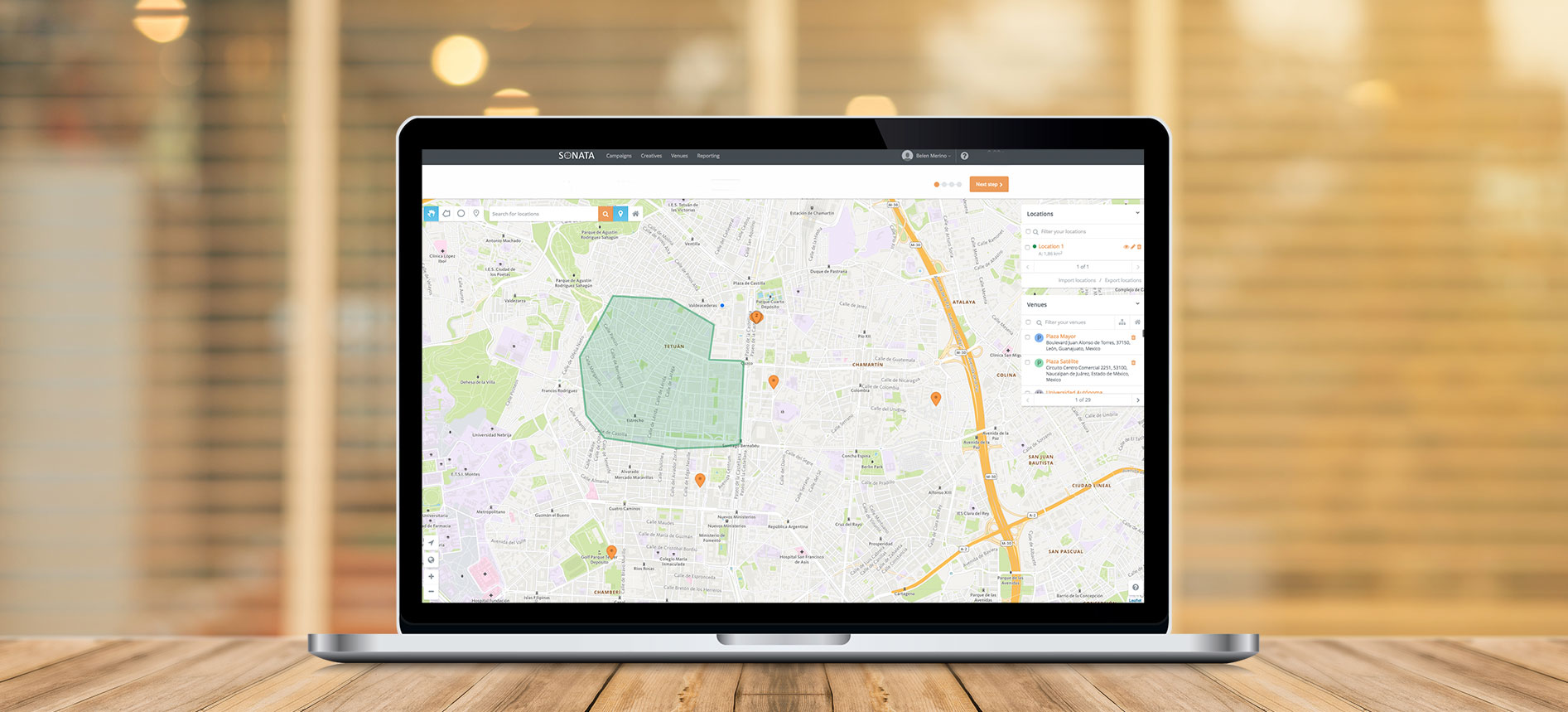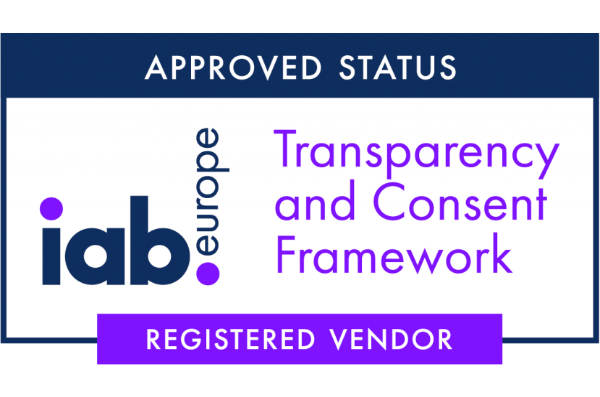Álvaro Mayol, Partner and CTO of TAPTAP Networks | Victor Iniesta, Senior Full Stack Engineer of TAPTAP Networks | Francisco Atilano, Senior Full Stack Engineer of TAPTAP Networks
When and how was Taptap founded, and how has it evolved since then?
Taptap was founded about eight years ago. It started out as an ad network or premium mobile network, where the main product consisted of the development of an AdServer and advertising SDK for the insertion in apps and subsequent commercialization of advertising spaces. The objective was to lead the mobilization of the content of the large Spanish publishers, mainly publishing groups. Four years ago, they began the development of a shopping platform (DSP/DMP) vastly focused on mobile, with a clear differentiator in terms of the use of data, and especially, location data. In this way, Sonata (DSP & DMP) emerged, offering profiling capabilities, activation and attribution/measurement of the audience with a mobile-centric approach.
What is Taptaps main objective?
To help advertisers and agencies activate data-driven branding strategies oriented to real business objectives, and efficiently and relevantly transfer their communications through any digital platform. Through the precise profiling, activation and attribution of the audiences, Sonata constructs and specializes data according to the phase of the purchase funnel the consumer is in.
What’s your main philosophy, and how do you differentiate yourself from the competition?
Thanks to having our own technology, developed 100% in-house, we can adapt our product to the diverse customer needs that may come up, as well as offer the highest quality in our design. This versatility and know-how at a technological level offers a clear differential factor in terms of service and strategic capacity.

On the other hand, Sonata has an original system that allows analyzing and measuring a new model of attribution, more specifically measuring the return on advertising investment (ROI or ROAS), and its contribution in terms of generating visits to the point of sale. That said, thanks to Sonata, we can measure all user interactions with digital and offline media (OOH, TV and radio) and the subsequent advance in the funnel, from the point of conversion to the point of sale. This allows us to have a unique view of the user and add this model to the already known digital conversion models. All this generates new tools and new sources of data to learn from, and feedback on "always-on" strategies, achieving better profiling, more relevant activation and therefore better results, both digitally and physically.
What exactly is the Sonata platform? What was its origin, and what is its function?
Sonata was born with a clear focus on the local sector. Its initial objective began as a self-service tool for local commerce with a great focus on hyperlocal activation of customer acquisition strategies through mobile advertising. From this concept, it’s evolved into a DSP/DMP mobile-centric platform that’s used both in a self-service manner, and in a managed manner, both by advertisers and by media agencies. The focus now is user activation, where through activation and mobile-centric knowledge, the attribution can be outlined, activated and measured through the entire funnel or purchase paths. The internal nature of Sonata hasn’t changed, as the specialized treatment of location data is still key, both for the construction of profiles, as well as the contextual segmentation of the audience, and for the consequent measurement of visits to the point of sale.
Why is it important to create audience profiles?
The new trend in advertising places the user as the axis of their actions, posing a new paradigm in the advertising market. To date, the huge effect of branding and awareness offered by offline media hasn’t been interconnected, with the deep capacity for segmentation, interaction and measurement of digital media, especially the mobile environment. Little by little, we’re seeing the great value that mobile-centric strategies provide in order to interact with users in all phases of the purchase funnel, and through any medium. With the arrival of programmatic advertising, the possibility of changing the focus from the purchase of media to the purchase of audiences has been enabled. In this way, thanks to new data sources and their subsequent analysis and processing, specialized audience taxonomies can be built according to the phase of the funnel each user is in. This is how we bring value to advertising, being able to segment those audiences for which they’re most useful and relevant, thereby maximizing the value of advertising. Additionally, it’s important that these profiles can be analyzed in order to generate look-alike models that can extend the reach of the campaigns, and find factors that correlate the success of the campaigns. These interactions are cross-media and cross-device, but are increasingly digital in nature. In turn, having familiarity allows us to move from a less effective mass-media communication (1 to N), to a more personalized one that impacts the user at the most appropriate time (1 to 1), achieving a more effective and relevant communication or interaction. If we know the context and the profile of the audience, we can also refer to a more personal and dynamic advertising approach that takes into account all this knowledge and intelligence, adding value, usefulness and relevance to the message.

How are audience profiles established in Sonata? Could you explain what Sonata LQI is?
The audience profiles we build use several data sources we’re connected to, which update the information constantly, and combined, offer a huge range of possibilities. First of all, we have the data of partners, DMPs and data holders, which provide us with an already classified audience based on their topologies. We also obtain first-hand data about the interactions of users with the websites and apps of the advertisers, which we extract with a system of pixels and cookies. Finally, we extract audience data from the campaigns that we run in our system. So that our users can extract all the potential that this constant flow of data holds, we’ve created a very powerful audience construction tool in which they can combine all our data sources with great flexibility.
This tool even allows our clients to create their own audience segments to reuse them in other campaigns. One of the main strengths of mobile advertising is geolocation, the possibility of knowing where the user is situated thanks to their location, shared through their mobile device. This allows us to offer the user advertising that may be the most attractive at that particular moment, based on the location and the context provided. Sonata extracts data from offers close to the physical point where the user is at the moment of impact, as well as the context surrounding them based on their location. All this data gives us, among many other things, detailed information about the atmospheric conditions of the space they’re in, if they’re in a commercial or leisure area, or if they frequently go to certain places. But this use of geolocation is only valid to the extent that the location information received is reliable and accurate. Otherwise, we’d be impacting the user with advertising that’s not of interest, negatively affecting the outcome of the campaign.
To avoid this, in Taptap we’ve developed a tool for classifying the quality of geolocation information received, called Sonata Location Quality Index (LQI). This tool is continuously fed with the geolocation information received in our DSP. Sonata LQI applies non-supervised machine learning algorithms, which allows the classification of large amounts of information according to the characteristics, without starting from an initial definition of the groups resulting from said classification. This classification back-feeds our DSP, which uses it to filter bid requests, whose location information doesn’t reach the minimum quality to guarantee reliable geolocation information, either due to its lack of precision, or because it’s located in historically unreliable locations. Sonata LQI is a tool in continuous operation, and receives new location information at all times, which is processed, classified and assimilated by increasing what’s already known. This allows a continuous process of refinement and improvement in the accuracy of Sonata LQI. That way, we guarantee that the campaigns served through Sonata use the most accurate and reliable geolocation information, achieving an important improvement in its performance, without increasing the cost of the campaign.
What protocols do you use to achieve the algorithmic optimization of campaigns?
Basically, we carry out two different processes to optimize campaigns that use different techniques. On one hand, we’ve built an expert system that continuously monitors active campaigns and updates them prioritizing the type of traffic that gives us the best result for the objective to be optimized in each campaign. We’ve been able to build up this heuristic system thanks to all the experience and knowledge that our teams have picked up, manually managing and optimizing campaigns. Knowledge that we’ve structured, and from which we’ve extracted metrics that allow us to feed the system. On the other hand, we’ve designed and built machine learning models using linear regression algorithms and SGD (stochastic gradient descent), which help us to know in bid time the suitability of each advertising space. Thanks to these machine learning techniques, we can decide the bid price that suits us best, and to try to stick with the advertising spaces that maximize the parameters to optimize our campaigns.

What are the forecasting tools that Sonata puts at the service of advertisers?
One of the problems we’ve had to face is the lack of accurate information about the audience and the inventory that can be accessed from our platform. This problem is further aggravated by taking into account the great variability of the inventory we receive over time. To solve that, we’ve developed several tools, among which forecasting management stands out. This tool is integrated with our campaign management interface and allows the analysis of potential traffic that’s available for a campaign. The first advantage it provides is that it allows a much more informed and accurate campaign planning before the start of the campaign, if your configuration reaches enough inventory or if you have to modify your segmentation to reach the audience you’re looking for. However, this isn’t the only thing we can do with forecasting. The tool allows the client to analyze the traffic with all the targeting tools that a campaign offers (location, device, connection, creativities, etc.). That is, it allows us to answer complex questions about our audience, such as where is my audience at a certain time. This can be combined perfectly with outdoor circuits to increase the power of outdoor strategies, or to measure out of home attribution (OOH).
What reporting tools do you make available to clients?
From the first moment, Sonata has distinguished itself through its transparency and its quick and reliable response in campaign reporting. The reporting we offer is updated practically in real time, allowing the user to have a very accurate view of how the campaign is behaving at all times. In addition, reporting allows us to analyze which inventory the campaign is coming out in, making aggregations for practically any variable that may be meaningful to define the audience (location, advertisements, device, etc.). With this, we can obtain very specific data about the audience of a campaign, such as: How many impressions we’ve made in a specific location in banner spaces to men with android phones that were using a certain app. The technology that allows us to provide this service is supported by an Elasticsearch cluster, which indexes the events of each campaign in its own index. In turn, these indices are divided into several subscripts, each with its own search engine, which are distributed in different servers. This allows us to take advantage of the capabilities of Elasticsearch to index in parallel, and perform searches and aggregations in parallel on several servers, achieving an optimal response time for large amounts of data and complex aggregations. Finally, all this reporting information provided to us quickly and extensively is very useful to readjust the campaigns, and optimize them based on the criteria we’re looking for in each case.
Are current methods of audience measurement sufficiently reliable?
In the case of mobile and desktop, the methods of measuring audiences that are used today are very precise. In fact, with them you can approach reality much more than with the methods of measuring the rest of the advertising media. That doesn’t prevent them from having their own problems, which are basically derived from the problem of fraud within the ecosystem. This is a war that we must wage continuously, since fraud evolves with technology itself. In this field, we’re making great efforts integrating tools of brand safety and viewability of third parties, as well as developing our own methods to always improve the quality of the inventory, and therefore the measurement of audiences. The LQI is an example of this. But if we look at the global picture, mobile or desktop audience measurements may require some statistical correction, while in other media they are purely statistical measurements from their base.
What services do you offer to those businesses that don’t have enough budget to invest in mobile marketing?
In Sonata, you can activate large global strategies that involve the activation of many campaign lines worldwide, but you can also activate hyperlocal campaigns or branding adjusted to a small advertiser who wants to activate audiences around a point of sale, or want perform branding actions. Obviously, the algorithms and data analysis tools work better the greater the volume of data there is to work on. Therefore, in campaigns or accounts with a smaller scope, some features may not be activated. But generally, Sonata allows you to work with large advertisers on a global scale, and with small local advertisers.
Is personalization one of the most important trends in digital marketing? Building audiences and dynamic ads.
The geolocation and the profiling of audiences permits knowing the profile of the user we’re going to impact in a more exact way. Through the geolocation information, we can know in a precise way, the physical place where the user is at the moment they receive the advertisement and the context that surrounds it. The contextual information that can be extracted varies greatly, from socio-demographic information associated to the place, more dynamic information such as atmospheric conditions, or going one step further and associating it with important events that are happening around it, such as the traffic conditions, level of pollution or sporting events. All this information, apart from being used in the DSP to select the most appropriate advertising to reach the user at any time, allows us to go a step further and offer the user more attractive and dynamic advertising, capturing their attention and impacting them in a more profound and lasting way.
Dynamic creativity allows you to update the content of an advertisement in real time, personalizing it in each impression, through the information that at that moment, we have of the user and their environment. Providing dynamism to an ad can be done easily by using macros. A macro is a predefined special value, which is included in the ad template and is replaced by the associated value at that time when the ad is served. The macros used by TAPTAP Networks, and that are served through its adserver, can be used both in the ads developed by Sonata’s creative team, and third-party developers. The list of dynamic information that can be integrated into the ads is in continuous growth, as new sources of data are added to enrich our advertising. As examples of dynamic advertisements, Sonata offers a wide variety: dynamic maps with precise indications to reach the store from the user's location, ads whose text is displayed in the user's language, weather information (from temperature and wind speed to UV rays), or updating the content of an advertisement based on events that are occurring at the same time, such as a football game, or social network interactions.All this information enriches the advertised product, giving it an added value and increasing the interest generated by it.
What are the key short and long term challenges of TAPTAP Networks?
The advertising and marketing market evolves at a very rapid pace, along with technological evolution itself. That’s why, as a product and technology company, Taptap must constantly adapt the product to new capacities, opportunities and evolutions. A great advantage is that our engineering and product team has been present since the beginning of the development of our platform, and has a great knowledge and specialization in everything that has to do with the AdTech ecosystem at a technical and engineering level. The key is to maintain our innovative differentiation factor at the level of commercial and product strategy, offering value solutions for advertisers and agencies. Additionally, our international expansion across the American continent, and now through various European countries beyond the Spanish market, requires a particular adaptation and scalability for each of the markets. Exporting and adapting the corporate and service processes around the product is key to successfully settling in each of these countries. Ultimately, Taptap's platform and technology, Sonata, is evolving to be able to implement solutions and strategies beyond the boundaries between the digital and offline. But it’s not about completing or unifying a vision about of the media. It’s about concentrating the media around their natural link, the user. Being able to identify this user as the fundamental axis of any conversion or sale process, we begin to abandon the language of advertising to make way for models oriented to real business objectives.
Your company has always placed great importance on internationalization. What do you think about the situation of digital and mobile marketing in our country, compared to the rest of the countries?
We believe that in our country, we’re accelerating the adaptation to certain trends that other countries such as the UK or the USA welcomed much earlier, like the purchase and management of advertising programs. Additionally, we believe that we’ve also restrained in some way the evolution towards an audience focus, where data takes on a greater role and value. That said, we see that it’s accelerating at a very good pace. Our experience in Europe has allowed us in some cases to differentiate ourselves in LATAM in some aspects. Our growth in LATAM has allowed us to accelerate the evolution of our product to meet needs that we had not yet experienced in Europe at the level of innovation, product and services.
Source: Marketingdirecto.com

















